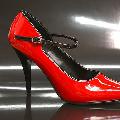คืนค่าการตั้งค่าทั้งหมด
คุณแน่ใจว่าต้องการคืนค่าการตั้งค่าทั้งหมด ?
ลำดับตอนที่ #2 : Instrument Care
Tighten your bow before playing by gently turning the tension screw. Avoid making the bow hairs too taut---the separation between the bow stick and hair should be about the width of a pencil.
Put a small amount of rosin on your bow before playing. Hold the rosin in your left hand, place the bow hairs flat on the rosin and slowly move the bow back and forth on the rosin.
After playing the violin, gently clean it with a soft cloth to remove rosin build-up on the strings.
Polish is rarely needed, and when necessary, only a commercial violin polish should be used. Cleaning the violin with furniture polish and/or water could damage the varnish and acoustics of the violin (water could also cause the violin seams to open).
Loosen the hair on your bow before putting it back in the case.
Do not store your violin in extreme hot or cold locations.
If you live in a dry climate, you may want to consider using a humidifier made for violins (excessive dryness can cause cracking or the seams of your violin to open).
Sticking or Loose Pegs
Humidity or temperature changes can sometimes cause wood pegs to stick or have difficulty turning. If you experience this, you may want to try an inexpensive product called peg compound (also called “peg dope”). Peg compound will not only lubricate the peg, but will also provide enough friction so the peg will not slip. When using peg compound or any other product to help with sticking or loose pegs, use it sparingly because a residue can build up over time (some violinists avoid these products).
To apply peg compound, remove the string from the peg, and slide the peg out of the pegbox. Apply a small amount of peg compound on the part of the peg that contacts the pegbox and reinsert the peg. Turn the peg a few times to make sure it turns smoothly. Wipe off any excess peg compound before restringing the peg.
If your pegs are too loose and keep slipping, try pushing the peg in securely while turning the peg firmly. If this doesn’t work, some violinists use either peg compound or another product called peg drops to stop pegs from slipping (peg drops, also known as peg grip are used solely for slipping pegs).
To apply peg drops, remove the string from the peg, slide the peg out of the pegbox, and apply one or two drops to the part of the peg that contacts the pegbox. Reinsert the peg and try turning it to make sure the peg sticks before restringing the peg.
If you need a temporary quick fix for slipping or tight pegs, some violin teachers use these tips: for sticking pegs, pull the peg partially out, and rub pencil graphite on the sticking part of the peg. For loose pegs, pull the peg partially out, and rub birthday candle wax on the peg to help it stick (some teachers recommend chalk or rosin to help pegs stick, but these substances can be abrasive). If you’re still having problems with your pegs, you may need to take your violin to a violin maker or instrument repair person to reshape or replace the pegs.


ความคิดเห็น